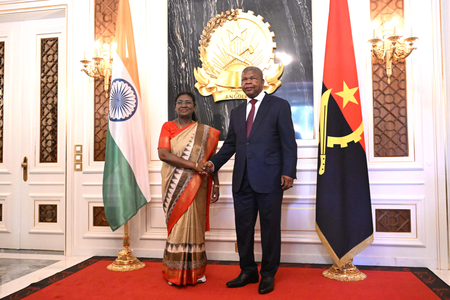
New Delhi, Oct 9 (IANS) The partnership between India and Japan in the Indo-Pacific remains multi-dimensional, integrating economic cooperation, strategic interests, and long-term sustainable development, a report cited on Thursday.
The Indo-Pacific partnership between New Delhi and Tokyo, reported India Narrative, offers a model for strategic, profitable and long-lasting diplomacy in the 21st century.
“It is greater than an alliance. At its core, the coalition is tied together by a common commitment to the rules-based international system, democratic values, and a common interest in maintaining regional stability. They both accept that the Indo-Pacific is an area where there is economic growth, technological innovation, and environmental care, as well as strategic competition. This partnership is an excellent illustration of how today’s diplomacy can integrate long-term development goals and traditional security interests,” the report stated.
It detailed that Japan offers advanced naval capabilities and maritime technologies, while India brings geographical location and military presence in the Indian Ocean. Both countries boost maritime security through coordinated exercises, including joint patrols and the Malabar naval exercise, planned to maintain freedom of navigation in critical sea lanes. Quad, comprising Japan, India, US and Australia, increases its collective ability to deter coercion and ensure regional stability.
“The economic dimension is the second pillar of the India-Japan partnership. India relies heavily on the Indo-Pacific for trade and energy security, so stability in the region is a precondition for the growth of the economy. Connectivity, technological innovation, and infrastructure development are areas where Japan’s Free and Open Indo-Pacific vision intersects with India’s Act East Policy,” the report stated.
“The level of bilateral business engagement is evident in the famous projects such as the Mumbai–Ahmedabad bullet train and Japanese investments in Indian manufacturing and industrial sectors. In an attempt to promote regional economic growth and offer an alternative to China’s Belt and Road Initiative, the two countries also collaborate on the development of projects in Southeast Asia and Africa. Uzbekistan. This doubling of investment since 2018 not only illustrates the nexus between strategic security and economic expansion (that is, stable sea lanes for trade and infrastructure co-investments that build resilience for both countries as well as regional clout),” it added.
According to the India Narrative report, for India, the alliance with Japan increases trade and energy security, generates employment, modernises infrastructure, and stimulates technology. It also strengthens Japan’s strategic position, creates new ways for investment, and enhances regional stability that is important for its own security and economic interests. The Quad offers other Indo-Pacific countries an alternative model of collaboration based on sustainable development, multilateral engagement, and democratic principles.
“The Indo-Pacific partnership between Japan and India provides a model for strategic, profitable, and long-lasting diplomacy in the 21st century. Political will to strengthen defence cooperation, ingenuity to create infrastructure projects that benefit citizens, and a sustained dedication to environmental stewardship are all necessary for success. By balancing national interests with regional stability and sustainable growth, India and Japan are establishing a benchmark for collaborations that go beyond exercises, treaties, or token gestures. In doing so, they are creating a resilient, shared future for the Indo-Pacific. This multifaceted strategy shows that collaboration among democracies can promote inclusive, long-term development for the entire region in addition to balancing out new threats,” the IN report highlighted.
–IANS
akl/as




